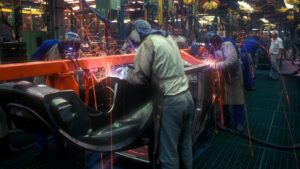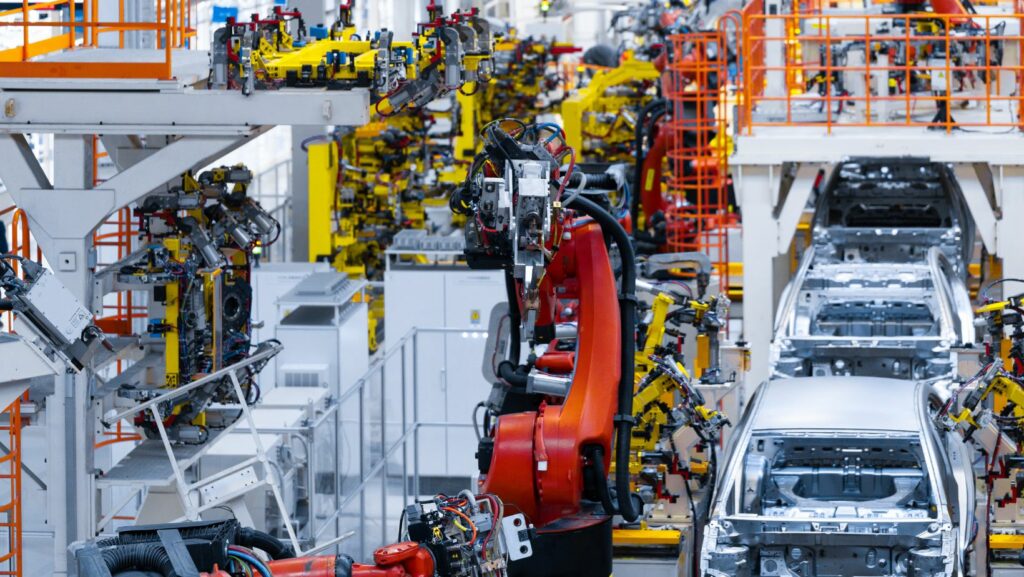In the fast-paced world of automotive technology, solutions that streamline processes, improve efficiency, and enhance safety are in high demand. These innovations are reshaping the way we think about transportation, bringing us closer to a future where autonomous, electric, and connected vehicles are the norm.
From smart diagnostics to advanced driver-assistance systems, automotive solutions are making our roads safer and our journeys more comfortable. They’re not just transforming the driving experience – they’re revolutionizing the entire automotive industry.
Automotive Solutions
The journey of automotive solutions, right from horse carriages to autonomous vehicles, presents a remarkable story of innovation and advancement. Important technological milestones have significantly focused on enhancing the efficiency, safety, and comfort of vehicular transportation.
From Horse Carriages to Autonomous Vehicles
 The evolution commenced with the introduction of horse carriages, achieved a milestone with mechanization, and has now reached a point of automation. Control transitioned from reins to wheel, progressing towards robotics with no human input needed. Steam engines of the 18th century gave way to the combustion engines, which are gradually being replaced by electric motors in the 21st century.
The evolution commenced with the introduction of horse carriages, achieved a milestone with mechanization, and has now reached a point of automation. Control transitioned from reins to wheel, progressing towards robotics with no human input needed. Steam engines of the 18th century gave way to the combustion engines, which are gradually being replaced by electric motors in the 21st century.
Notably, Henry Ford’s assembly line production in 1913 brought cars to the masses, setting the stage for widespread vehicular mobility. Decades later, advancements in electronics were incorporated into automobiles, enhancing vehicle performance, safety, and comfort. Now, we’re on the cusp of a new era with autonomous, electric, and connected vehicles setting the pace for the future of the automotive industry.
Major Technological Milestones
Key milestones have punctuated the continuous evolution of automotive solutions. In the early 20th century, electric starters replaced crank starters. This significant achievement in the 1920s made vehicles easier and safer to operate. The first on-board computer system appeared in the 1960s, catapulting automobiles into the digital age.
Later, in the late 1970s, anti-lock braking systems (ABS) were introduced as a major safety advancement. By the start of the new millennium, the incorporation of global positioning systems (GPS) transformed navigation. Most recently, the integration of artificial intelligence in advanced driver-assistance systems (ADAS) provides a glimpse into impending autonomous vehicle technology.
Key Components of Modern Automotive Solutions
Zooming in on the present age, let’s explore two critical components of today’s automotive solutions that are at the forefront of creating safer, more efficient vehicles.
Electric and Hybrid Systems
 Automotive landscape of the 21st century sees a shift from exclusive use of internal combustion engines (ICE) to electric and hybrid systems, which integrate the traditional ICE with an electric propulsion system. Think Chevrolet Volt, a plug-in hybrid, or Tesla Model S, a fully electric vehicle, to grasp the idea. These systems not only reduce CO2 emissions but also offer significant operational savings, making them the ideal choice for future automotive trends.
Automotive landscape of the 21st century sees a shift from exclusive use of internal combustion engines (ICE) to electric and hybrid systems, which integrate the traditional ICE with an electric propulsion system. Think Chevrolet Volt, a plug-in hybrid, or Tesla Model S, a fully electric vehicle, to grasp the idea. These systems not only reduce CO2 emissions but also offer significant operational savings, making them the ideal choice for future automotive trends.
Advanced Driver-Assistance Systems (ADAS)
Another pivot in the automotive solutions’ narrative lies in the Advanced Driver-Assistance Systems (ADAS). With roots in technologies like adaptive cruise control and automatic parking, ADAS encompasses utilities engineered to augment safety and enhance driving comfort. For instance, Tesla’s Autopilot, which applies brakes, accelerates, and even steers in certain conditions, exemplifies how ADAS is transforming the driving experience by alleviating driver fatigue, thereby improving safety on roads.
Impact of Automotive Solutions on the Environment
 Automotive solutions greatly influence environmental conditions, both positively and negatively. The emerging era of such solutions strives to mitigate their harmful effects while maximizing their benefits.
Automotive solutions greatly influence environmental conditions, both positively and negatively. The emerging era of such solutions strives to mitigate their harmful effects while maximizing their benefits.
Reduction in Carbon Emissions
Foremost, automotive solutions, particularly electric and hybrid vehicles, play a vital role in carbon emission reduction. By shifting from fossil fuels to more sustainable energy sources, these vehicles reduce greenhouse gas emissions. As an instance, The International Council on Clean Transportation (ICCT) reports an approximate 30% decrease in CO2 emissions in hybrids compared to their gasoline counterparts. The reduction is even more pronounced in fully electric vehicles — as much as 60%.Challenges with Battery Disposal
However, these advancements present new environmental issues, notably, difficulties in battery disposal. Electric and hybrid vehicles rely extensively on lithium-ion batteries.
For the full environmental benefits of these technologies to be realized, proper disposal and recycling mechanisms for these battery packs are essential, which is a major challenge automotive solutions specialists are currently facing.



